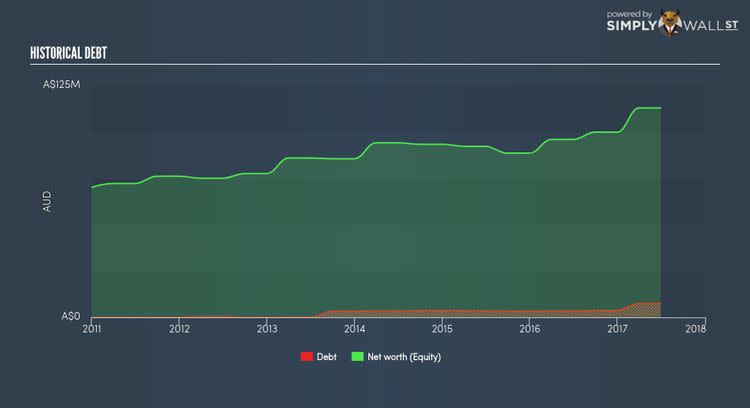Is Carnegie Clean Energy Limited (ASX:CCE) A Financially Sound Company?

Investors are always looking for growth in small-cap stocks like Carnegie Clean Energy Limited (ASX:CCE), with a market cap of AUD A$109.60M. However, an important fact which most ignore is: how financially healthy is the company? Why is it important? A major downturn in the energy industry has resulted in over 150 companies going bankrupt and has put more than 100 on the verge of a collapse, primarily due to excessive debt. These factors make a basic understanding of a company’s financial position of utmost importance for a potential investor. Here are a few basic checks that are good enough to have a broad overview of the company’s financial strength. See our latest analysis for CCE
How does CCE’s operating cash flow stack up against its debt?
While failure to manage cash has been one of the major reasons behind the demise of a lot of small businesses, mismanagement comes into the light during tough situations such as an economic recession. These catastrophes does not mean the company can stop servicing its debt obligations. We can test the impact of these adverse events by looking at whether cash from its current operations can pay back its current debt obligations. In the case of CCE, operating cash flow turned out to be -1.22x its debt level over the past twelve months. This means what CCE can generate on an annual basis, which is currently a negative value, does not cover what it actually owes its debtors in the near term. This raises a red flag, looking at CCE’s operations at this point in time.
Does CCE’s liquid assets cover its short-term commitments?
What about its commitments to other stakeholders such as payments to suppliers and employees? During times of unfavourable events, CCE could be required to liquidate some of its assets to meet these upcoming payments, as cash flow from operations is hindered. We should examine if the company’s cash and short-term investment levels match its current liabilities. Our analysis shows that CCE is able to meet its upcoming commitments with its cash and other short-term assets, which lessens our concerns for the company’s business operations should any unfavourable circumstances arise.
Can CCE service its debt comfortably?
Debt-to-equity ratio tells us how much of the asset debtors could claim if the company went out of business. CCE’s debt-to-equity ratio stands at 6.66%, which indicates that the company faces low risk associated with debt.
Next Steps:
Are you a shareholder? Although CCE’s debt level is relatively low, its cash flow levels still could not copiously cover its borrowings. This may indicate room for improvement in terms of its operating efficiency. Though, the company will be able to pay all of its upcoming liabilities from its current short-term assets. Given that its financial position may be different. You should always be keeping abreast of market expectations for CCE’s future growth on our free analysis platform.
Are you a potential investor? CCE’s low-debt position gives it headroom for future growth funding in the future. Moreover, its high liquidity ensures the company will continue to operate smoothly should unfavourable circumstances arise. To gain more confidence in the stock, you need to also examine the company’s track record. You should continue your analysis by taking a look at CCE’s past performance analysis on our free platform to conclude on CCE’s financial health.
To help readers see pass the short term volatility of the financial market, we aim to bring you a long-term focused research analysis purely driven by fundamental data. Note that our analysis does not factor in the latest price sensitive company announcements.
The author is an independent contributor and at the time of publication had no position in the stocks mentioned.

